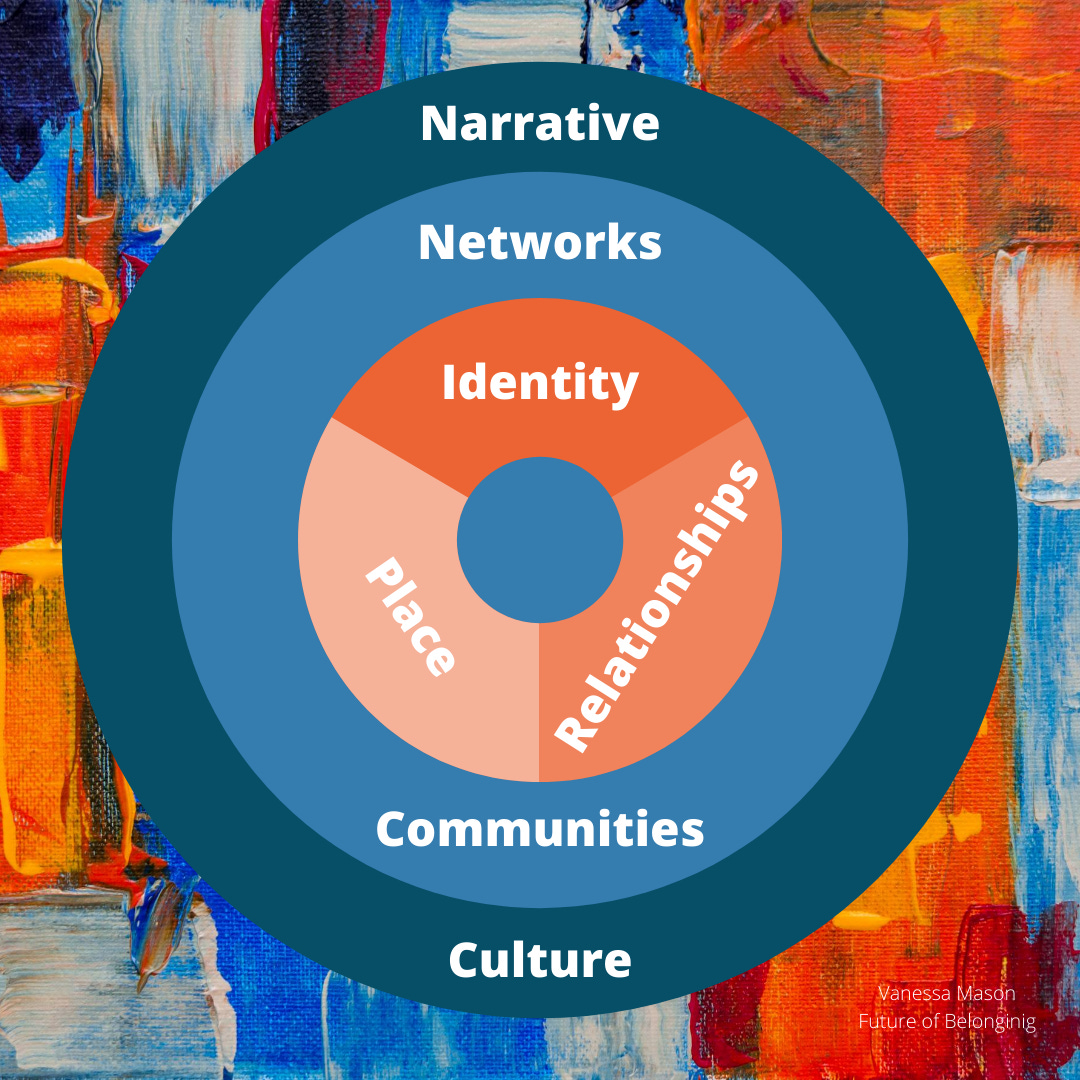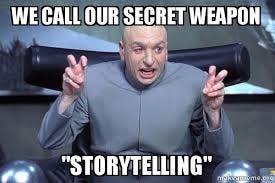Issue #24: Mapping the Future of Belonging Landscape
"Maps are a way of organizing wonder." — Peter Steinhart
When I started this learning in public endeavor exploring the future of belonging, I examined how belonging was defined and operationalized. This tour of belonging in the social sciences added context to a few of the initial questions that I had.
Over the last six months, my thinking has grown more structured, resulting in the basic graphic I made above capturing the various facets of belonging. The inner circle represents arenas for direct connection. The next circle represents the infrastructure that provides access to those connections. The most external circle represents the enabling systems for that infrastructure. Here are more details about the key segments along with memes for illustrative purposes.
Identity
This arena explores the new ways we define, create, conceal, reveal and choose who we are. Digital identity is top of mind, bringing up questions of veracity, desirability, and mutability at far larger scales of impact and pace. With advancements in brain-computing interfaces and brain science, we have clearer approaches to hack and manipulate the mind for engineered neurodivergence. As mindfulness has gone mainstream, more and more people are on journeys inward to learn who they are and make conscious choices about how they interact with others around them. The current pandemic has compelled mass abandonment of socially acceptable identities that were not core to those individuals’ true identities and hypervisible peacocking of other social identities.
Place
This arena explores the new locales including geographical, social, virtual and temporal spaces and their boundaries. Major shifts such as gentrification and climate displacement do and will continue to physically destroy locations while renderinig other places like malls socially ruined. Major shocks like the COVID19 pandemic make institutions like office workplaces and schools in contested spaces rather than commons, bringing safety to the forefront of concern in all shared spaces. The places for gathering have attained extreme scale. On one end, places have gone micro as socializing moves to the home and “pop up” like virtual interactions through platforms such as Lunch Club and Quilt. On the other end, macro-level locations like the Fortnite concert featuring Travis Scott that had over 12 million in attendance make it possible belonging to transcend physical and social boundaries.
Relationships
This arena explores our connections to others: kinship, friendship and romantic relationships. Through shared history, language and emotional attachment, these relationships create a sense of comfort as well as vehicles for the transmission of financial and social capital. Relationships form the foundation for the high quality social interactions that every person needs for a minimum level of physical, mental and emotional health. Rather than relying on a combination of serendipitity and forced choice to build these relationships, over the next decade we see far greater investment in the choice and design of these relationships, aiming for quality optimization. Negotiation in romantic relationships becomes required rather than optional with the dawn of romantic realism, absent the stranglehold of patriarchal gender norms. Kinship moves from its traditional biological roots to a mishmash of contractual agreements for surrogacy, co-parenting and other non-nuclear family arrangements.
Networks
Ironically, social networks have never been supportive of belonging. In effect, the platform still center the experience of the individual for extracting value from the data they generate. Instead, networks such open source software development provide a glimpse of a networked model for collective contribution and shared benefits. As networks grow more decentralized and distributed, the nature of belonging shifts from an accidental byproduct to ethical imperative, centering proactive moderation rather than reactive compliance. Movements to decolonize artificial intelligence and data science represent benign examples of this shift. One ill-intended manifestation of this are the rise of digital cults swarming the comments sections of celebrities and others to compel ostracism. As infrastructure for proactive, coordinated, and collective actions, networks transcend the constraints of place boundedness for agility in leveraging both identity and relationships.
Communities
Community is so hot right now, accelerated by….you guessed it…the pandemic. I truly love to see communities large and small rise together to counter social vulnerability and exclusion. We should also be cautious of the concomitant rise of community washing, commodifying and devaluing community and belonging for the sake of greater extractive economic growth. Emerging economic ecosystems and new paradigms like the Gross Ecosystem Product expand the notion of who as well as what belongs in our community, drawing in nature into community building efforts. The legacy of trauma from state sponsored and sanctioned surveillance takes on more insidious means of exclusion, veiled behind the objectivity of data. Only now, the private sector acts in similar manner with even less accountability. Thankfully, mutualism is more visible than ever before and thousands have rediscovered civic engagement as an avenue for building belonging by design by investing in community wealth and resilience. As infrastructure for connecting the capital of social relationships with the dynamism of place, communities transcend our cognitive limits on quality relationship maintenance for additional benefit and leverage.
Narrative
Language we use for the stories we tell ourselves remain powerful mechanisms for creating and sustain norms about belonging. The clearest arguments focus on media representation: “You can’t be what you can’t see.” Media representation creates space for stories that already existed to have greater airtime, certainly necessary for fostering belonging but not sufficient. Rather than persuading with information, the next decade moves toward leveraging the bugs in our collective sensemaking apparatus through approaches such as developing prospiracy theories and building cognitive immunity. We question the assumptions embedded in language, acknowledging the violence of objectivity and understanding that communication relies on more than words to build trust, safety and understanding needed for belonging to exist.
Culture
Culture is a form of power. What is fixed and rigid becomes a cudgel for power over people who do not fit that definition. What is fluid permits both growth and ease. Although we associate culture with the arts and other forms of creative expression, I like to think of culture as the air that we breathe. We may not always see it directly, but we see its effects and feel its absence acutely. Culture includes values and ethos as well as the behaviors and norms that keeps those concepts alive. Access to imagination is a necessity, not a luxury. What and who we choose to celebrate informs and reinforces notions of success, performance and worth. Belonging is shifting from nice-to-have to essential. As credentials and obligation carry less weight in sustaining behavior and norms, belonging has room to grow in the vacuum if underlying assumptions are reimagined and redesigned to make the impossible possible.
Upcoming Events
I’m hosting another Future of Belonging Meetup on Monday, August 24 at 5:30 pm PT. This one will be interactive! We will build on this landscape on a Miro board together. RSVP at https://bit.ly/belongingaugust
I’m speaking at CHROMA, the virtual conference hosted by Black and Brown Founders. My talk will be on leveraging tech to build belonging. Get your ticket here today!








